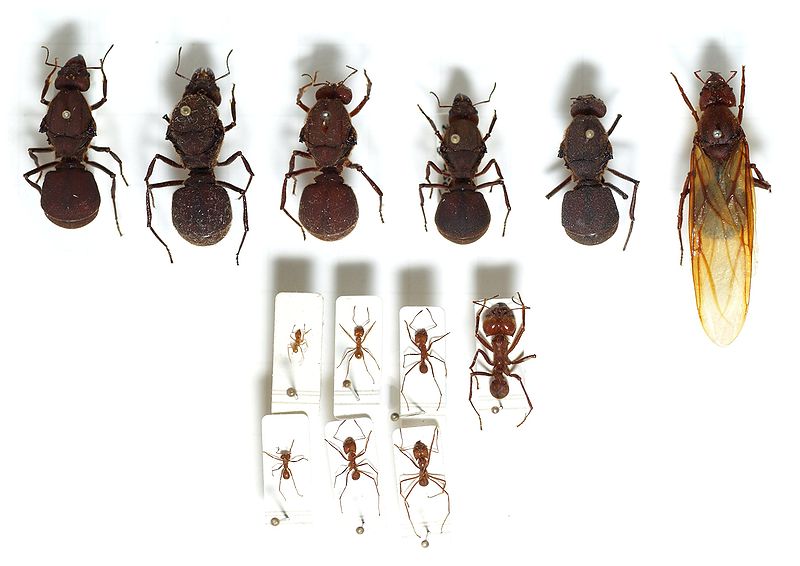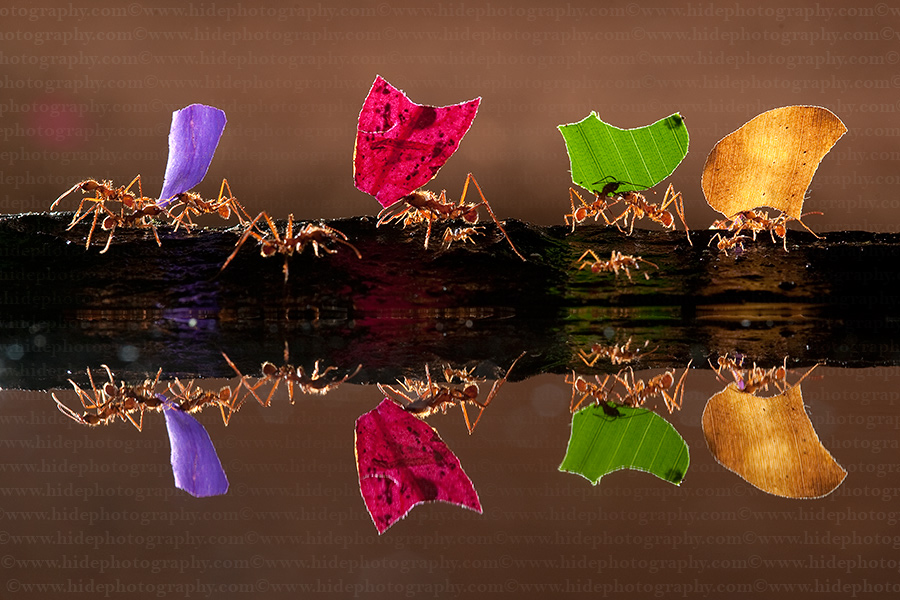Reproduction
All colonies of Atta ants have a queen who produces all offspring for the colony. During Atta cephalotes breeding season, the queen in mature colonies produces mass numbers of young reproductive males and females (Hölldobler & Wilson, 2011). The males are reared solely for reproduction and die soon after they inseminate the queen. The queen is inseminated by multiple males; close to 3-8 males inseminate the queen. She stores the sperm in her spermatheca for later use of producing young. It’s estimated that these queen ants store millions of sperm cells in their spermatheca and have a lifetime supply for her eggs. It’s been debated why the queen needs so many different males sperm. Some say it increases the genetic diversity within the colony which betters the colonies fitness and helps limit presence of diseases (Hölldobler & Wilson, 2011). The queen will produce 150-200 million female and worker ants in her lifetime, therefore, requiring a large amount of sperm (Hölldobler & Wilson, 2011). Unfortunately, out of the many females produced during the breeding season, only a handful out of the thousands hatched will survive and create new colonies. The male and female reproductive ants produced by the queen develop wings along with the queen. Soon, after reproduction, all female ants including the queen lose their wings, and the males die (Hölldobler & Wilson, 2011).
In order for reproduction to occur, the male and female ants take flight high in the air. Young female queen ants are taken down to the ground where many other eager males are waiting to get their turn to inseminate her. Other species of Atta are also breeding during this time, usually late October to December towards the end of the day to night time, the same as Atta cephalotes, so the probability of out breeding is high since the genus Atta also uses high flights for mating (Hölldobler & Wilson, 2011).
Each queen ant packs part of the mycelia garden
from the base colony into a wad and
stored near her esophagus before flight so that when she starts
her own colony after being inseminated she is able to start her
own garden. After her garden starts to grow, she feeds her first
egg to it to help it grow (Hölldobler & Wilson, 2011). The queen
will consume or feed the fungal garden most of the eggs she
produces when starting her colony. The first larvae to hatch are
also fed with her eggs. Then later, when the colony is mature
enough, the working ants feed the queen with their trophic eggs
(Hölldobler & Wilson, 2011). Soon after the nest starts to
mature, the queen stops taking the role of watching over the
eggs. She is then pampered by the other ants who take on roles
of foraging, watching over the nest, and taking care of her.
They provide her with trophic eggs to eat and she becomes an
“egg laying machine”. The colony ants are constantly caring to
her needs. Without the queen the colony is condemned, she is
their only reproductive figure (Hölldobler & Wilson, 2011).

